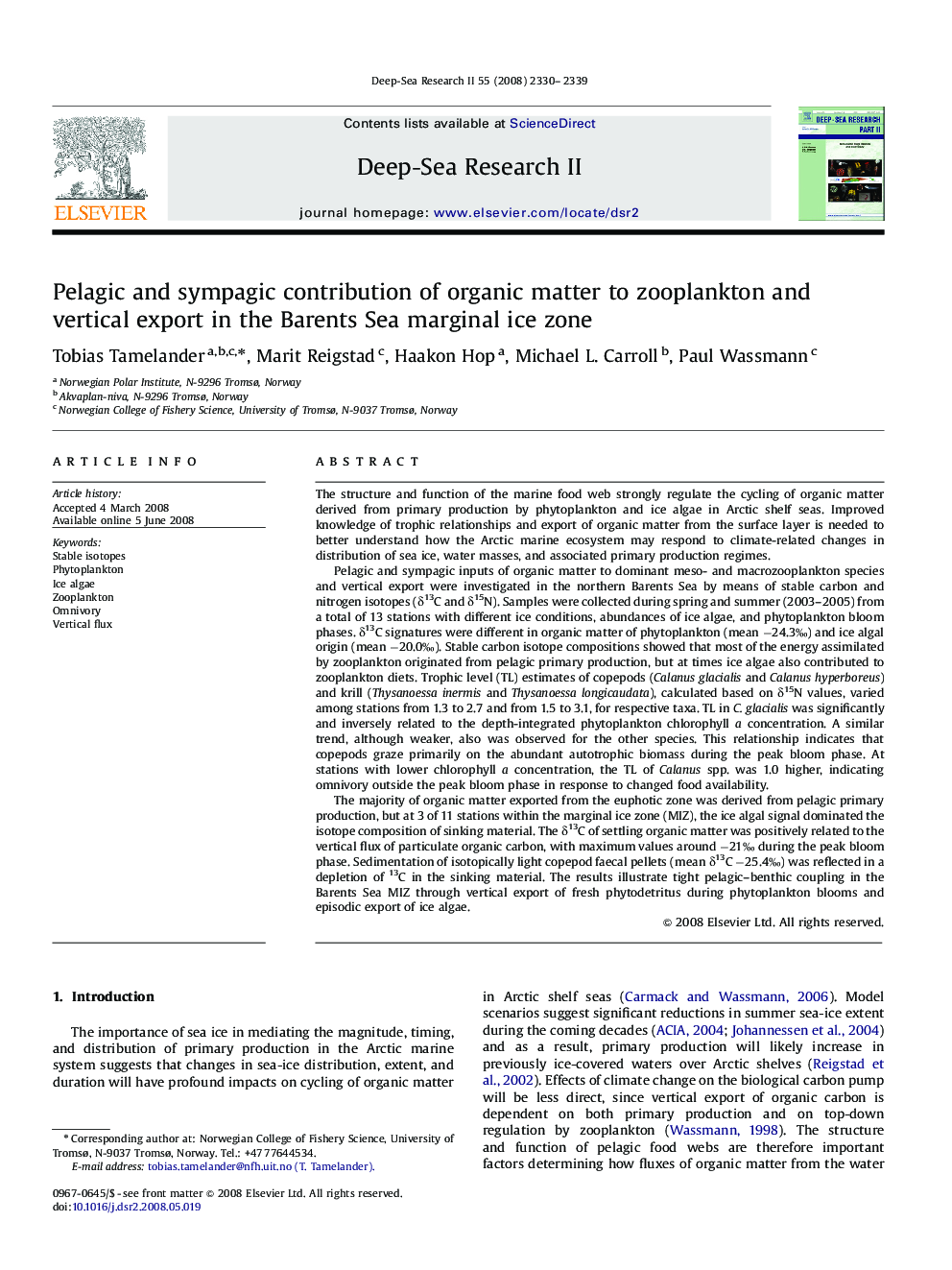| کد مقاله | کد نشریه | سال انتشار | مقاله انگلیسی | نسخه تمام متن |
|---|---|---|---|---|
| 4537955 | 1626491 | 2008 | 10 صفحه PDF | دانلود رایگان |

The structure and function of the marine food web strongly regulate the cycling of organic matter derived from primary production by phytoplankton and ice algae in Arctic shelf seas. Improved knowledge of trophic relationships and export of organic matter from the surface layer is needed to better understand how the Arctic marine ecosystem may respond to climate-related changes in distribution of sea ice, water masses, and associated primary production regimes.Pelagic and sympagic inputs of organic matter to dominant meso- and macrozooplankton species and vertical export were investigated in the northern Barents Sea by means of stable carbon and nitrogen isotopes (δ13C and δ15N). Samples were collected during spring and summer (2003–2005) from a total of 13 stations with different ice conditions, abundances of ice algae, and phytoplankton bloom phases. δ13C signatures were different in organic matter of phytoplankton (mean −24.3‰) and ice algal origin (mean −20.0‰). Stable carbon isotope compositions showed that most of the energy assimilated by zooplankton originated from pelagic primary production, but at times ice algae also contributed to zooplankton diets. Trophic level (TL) estimates of copepods (Calanus glacialis and Calanus hyperboreus) and krill (Thysanoessa inermis and Thysanoessa longicaudata), calculated based on δ15N values, varied among stations from 1.3 to 2.7 and from 1.5 to 3.1, for respective taxa. TL in C. glacialis was significantly and inversely related to the depth-integrated phytoplankton chlorophyll a concentration. A similar trend, although weaker, also was observed for the other species. This relationship indicates that copepods graze primarily on the abundant autotrophic biomass during the peak bloom phase. At stations with lower chlorophyll a concentration, the TL of Calanus spp. was 1.0 higher, indicating omnivory outside the peak bloom phase in response to changed food availability.The majority of organic matter exported from the euphotic zone was derived from pelagic primary production, but at 3 of 11 stations within the marginal ice zone (MIZ), the ice algal signal dominated the isotope composition of sinking material. The δ13C of settling organic matter was positively related to the vertical flux of particulate organic carbon, with maximum values around −21‰ during the peak bloom phase. Sedimentation of isotopically light copepod faecal pellets (mean δ13C −25.4‰) was reflected in a depletion of 13C in the sinking material. The results illustrate tight pelagic–benthic coupling in the Barents Sea MIZ through vertical export of fresh phytodetritus during phytoplankton blooms and episodic export of ice algae.
Journal: Deep Sea Research Part II: Topical Studies in Oceanography - Volume 55, Issues 20–21, October 2008, Pages 2330–2339